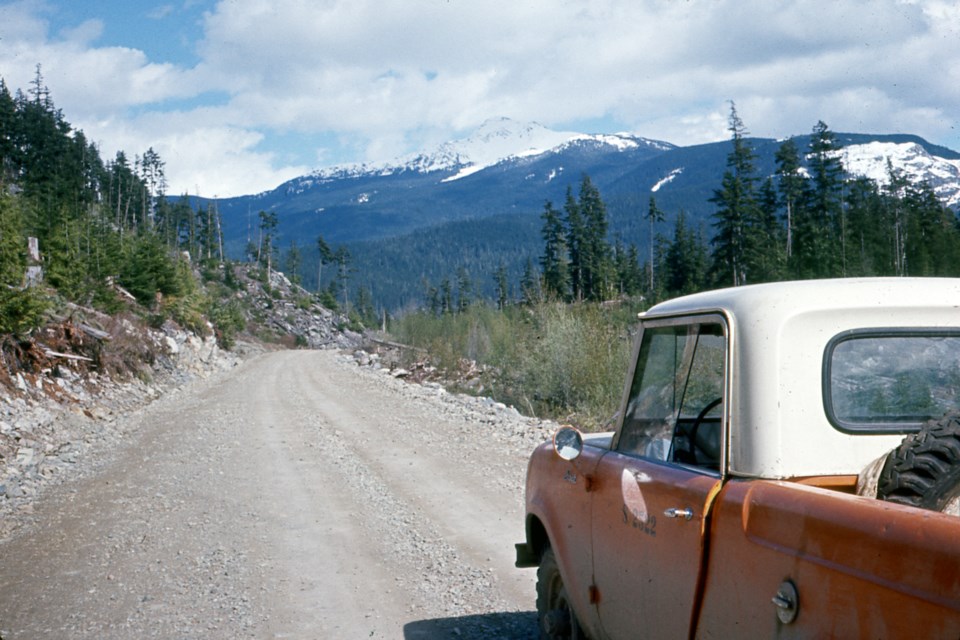You may spend the day breathing in dust while you are riding in the Whistler Mountain Bike Park, but it is unlikely you have to worry about dust every day while hanging out in your yard. However, when Whistler’s roads were all gravel, dust was a major problem throughout the valley.
Brent Wallace grew up spending weekends at his family cabin in Alta Vista throughout the 1960s and 1970s.
“Here’s something that people will not believe—used motor oil from cars, trucks and buses was spread on the highway to keep the dust down,” he said, when describing the oiling process.
“Oil trucks would go up and down the highway and through the subdivisions spreading oil to keep the dust down. It was done on an industrial level. You would hire a company or the highways department would oil the highway.”
Drivers on Highway 99 would feel lucky when the road had been recently oiled before their trip.
Highway 99 was paved during the summer of 1966 from Squamish to Mons. However, the paving of local roads came far later. You can imagine the mess that the oil would make for cyclists and pedestrians. In 1979, the Whistler Question wrote, “By now, those of you who have dogs, small children, baby strollers, 10-speed bicycles, fast cars and white jogging shoes will have realized that the recently-gravelled shoulders of Highway 99 have been liberally laced with oil from Cheakamus Canyon to Alpine Meadows.”
Despite following the spirit of “reduce, reuse, recycle,” the oiling of the roads was not cheap. In 1979, residents on the west side of Alta Lake were disappointed to hear that Alta Lake Road was not going to be oiled with Whistler’s other residential streets. The municipality decided against it because the process was going to cost $4,000 to oil just the residential section of the gravel road.
Even once the town centre was developed, many local roads remained dirt. It was not until 1982 that the roads around Alpine were paved to improve access to the newly created Meadow Park. Roads throughout the other local subdivisions followed, while north of Whistler, the Duffey Lake Road was not paved until 1992.
It is almost impossible to imagine pouring truck loads of motor oil around Whistler’s pristine lakes and forests today, although this method for dust dampening is still used on dirt roads in some more remote regions of Canada.
While you may come across the odd pothole, dampening the dust on suburban streets is not something we have to worry about anymore. Instead of being poured on the road, used motor oil can be recycled at many of the automotive shops in Function Junction.




